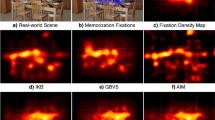Abstract
This paper analyses the elements and characteristics of scene design, so that designers can establish the theoretical framework and work-flow of scene design. Systematic analysis was used to analyze the factors, relationships and mechanisms. This paper puts forward that scene consists of objective scene, emotional psychology and scene interaction. We need to be more systematic in defining scene system design and use it to guide our design, adhere to the design concept of people-oriented, let people, things and fields be unified in sensibility and logic, release the value of scene system design.
Access this chapter
Tax calculation will be finalised at checkout
Purchases are for personal use only
Similar content being viewed by others
References
Koomans, M., Hilders, C.: Design-driven leadership for value innovation in healthcare. J. Des. Manage. J. 11, 43–57 (2016)
Read, G.J.M., Salmon, P.M., Goode, N., Lenné, M.G.: A sociotechnical design toolkit for bridging the gap between systems-based analyses and system design. J. Hum. Factors Ergon. Manuf. Serv. Ind. 28, 327–341 (2018)
Schön, D.A.: Designing as reflective conversation with the materials of a design situation. J. Knowl. Based Syst. 5, 3–14 (1992)
Suh, J., Cho, J.Y.: Analyzing individual differences in creative performance: a case study on the combinational ideation method in the interior design process. J. Inter. Des. 43, 9–23 (2018)
Spector, P.E.: Do not cross me: optimizing the use of cross-sectional designs. J. Bus. Psychol. 34, 125–137 (2019)
Author information
Authors and Affiliations
Corresponding author
Editor information
Editors and Affiliations
Rights and permissions
Copyright information
© 2020 The Editor(s) (if applicable) and The Author(s), under exclusive license to Springer Nature Switzerland AG
About this paper
Cite this paper
Wang, Y., Han, J. (2020). Analysis of the Components of the Scene System and Its Characteristics. In: Di Bucchianico, G., Shin, C., Shim, S., Fukuda, S., Montagna, G., Carvalho, C. (eds) Advances in Industrial Design. AHFE 2020. Advances in Intelligent Systems and Computing, vol 1202. Springer, Cham. https://doi.org/10.1007/978-3-030-51194-4_69
Download citation
DOI: https://doi.org/10.1007/978-3-030-51194-4_69
Published:
Publisher Name: Springer, Cham
Print ISBN: 978-3-030-51193-7
Online ISBN: 978-3-030-51194-4
eBook Packages: EngineeringEngineering (R0)




